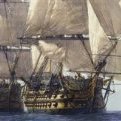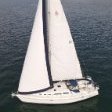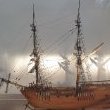
paulb
Members-
Posts
117 -
Joined
-
Last visited
-
 CraigVT reacted to a post in a topic:
HMS Victory by paulb - Caldercraft - 1:72
CraigVT reacted to a post in a topic:
HMS Victory by paulb - Caldercraft - 1:72
-
 kiwiron reacted to a post in a topic:
HMS Victory by paulb - Caldercraft - 1:72
kiwiron reacted to a post in a topic:
HMS Victory by paulb - Caldercraft - 1:72
-
 kiwiron reacted to a post in a topic:
HMS Victory by paulb - Caldercraft - 1:72
kiwiron reacted to a post in a topic:
HMS Victory by paulb - Caldercraft - 1:72
-
 kiwiron reacted to a post in a topic:
HMS Victory by paulb - Caldercraft - 1:72
kiwiron reacted to a post in a topic:
HMS Victory by paulb - Caldercraft - 1:72
-
 kiwiron reacted to a post in a topic:
HMS Victory by paulb - Caldercraft - 1:72
kiwiron reacted to a post in a topic:
HMS Victory by paulb - Caldercraft - 1:72
-
 Charter33 reacted to a post in a topic:
HMS Victory by paulb - Caldercraft - 1:72
Charter33 reacted to a post in a topic:
HMS Victory by paulb - Caldercraft - 1:72
-
 mort stoll reacted to a post in a topic:
HMS Victory by paulb - Caldercraft - 1:72
mort stoll reacted to a post in a topic:
HMS Victory by paulb - Caldercraft - 1:72
-
 Keith Black reacted to a post in a topic:
HMS Victory by paulb - Caldercraft - 1:72
Keith Black reacted to a post in a topic:
HMS Victory by paulb - Caldercraft - 1:72
-
 allanyed reacted to a post in a topic:
HMS Victory by paulb - Caldercraft - 1:72
allanyed reacted to a post in a topic:
HMS Victory by paulb - Caldercraft - 1:72
-
Catharpins are short lengths of rope, with an eye spliced on both ends. Rope and eyes are served using 0.1mm rope. The main challenge is to make them of the right length. Although they slightly increase in length from fore to aft, this is hardly noticeable. Catharpins in position, attached to the 4th, 5th, 7th and 9th shroud.
-
 mort stoll reacted to a post in a topic:
HMS Victory by paulb - Caldercraft - 1:72
mort stoll reacted to a post in a topic:
HMS Victory by paulb - Caldercraft - 1:72
-
FortressHarris started following paulb
-
Following a fairly long summer break, the work has started again. First I had to finalize the shrouds of the main mast and the mizzen mast. So mainly fixing the dead eyes and the lanyards. Never mind the gunport lids. That is collateral damage, and easy to fix. Then the futtock staves: I used a 0.8mm brass rod, and served it with 0.1mm black thread. Next the futtock shrouds, meant to keep the futtock plate and lower dead eyes of he top mast shrouds in place when those shrouds are being tightened. The futtock shrouds have an eye slice to accomodate a hook, which is put in a hole in the futtock plate. The whole length is served. The lower end will be tied to the futtock stave in the following way: More to come!
-
Just a small update of a lot of work and a long period of inactivity (in terms of model ship building😉). I finished the starboard side of the lower foremast. The lanyards are fitted in a formal way: as I used shroud laid cable for the shrouds (which, according to a colleague ship builder is also a good choice) I started threading the lanyard through the top-front hole of the top dead eye, then up and down, and then wind it around the lower end of the shroud. The lanyards on the MS Victory are tied together in a certain way, which I have copied. After that I fitted 5 mm shroud cleats which I bought separately, as I found the cleats in the kit too big. The result: Detail of the lanyards Compared to the original Next: the port side.
-
 paulb reacted to a post in a topic:
HMS Victory by paulb - Caldercraft - 1:72
paulb reacted to a post in a topic:
HMS Victory by paulb - Caldercraft - 1:72
-
Standing rigging continued. First the pendants of the tackles: fore and main mast two on either side, mizzen mast, fore top mast and main top mast one on each side: Fore mast: Main mast: Mizzen mast: Main top mast: Painting the deadeyes black: The fore shroud of the fore and main mast are completely served. The others from the sling around the mast head to about the height of the yard: Before starting with attaching the shroud to the deadeyes (and lanyards) I first made the thimble for the main topmast preventer stay on the fore mast: Then my method for securing the deadeyes to the shrouds. I decided to use shroud laid rope for the shrouds , and that affects the way one should attach the dead eyes. The information about what kind of rope to use for the shrouds is conflicting; it was only after I made all the shrouds that I found out that the fore and main mast shrouds be cable laid and the ones of the mizzen mast shroud laid. Too late to change!! With shroud laid shrouds, the short end lies forwards of the standing part on the port side of the ship and aft on the starboard side. Additionally the short end runs on the inside (deck side) of the standing part, just above the dead eye: I made sure that the deadeye is at the right height: just above the netting in case of the fore mast. To make sure their height are all the same I made a simple jig out of a brass wire. I used two small clips behind the upper deadeye, as the jig tended to slip out of the holes. Then I put tension on the rope, and clamped it: Two drops of CA glue to fix the rope on the deadeye: The end of the shroud is secured to the deadeye with three seizing: A throat seizing (horizontal) immediately above the deadeye.... ....and two round seizing (vertical) to the standing part, making sure the seizing are at the same height in all shrouds: First round seizing: Second round seizing: The loose end: some CA glue just above the seizing: And clipping it of with a nail trimmer for the end result: The rest will take some time...
-
After reading James Lee carefully, I decided to take his interpretation of the tackle pendants, meaning that those of the fore and main masts will be put around the mast head, just as the shrouds. That meant making a cable of the correct length with a thimble turned in each side, served along its entire length. I started by fastening the thimble to the rope (1,2mm) with a small drop of superglue. Next seizing of the rope, starting close to the thimble: Seizing towards the thimble, and securing the thin rope with of knot and some superglue: Then the seizing away from the thimble can start, for a short distance around the three strands of the rope: In order to taper the seizing I took out one strand of the rope, and continued with the other two: A short distance with two strands, dropping another strand and end up with only one and then just the rope: Serving the rope: and securing the serving thread where the seizing of the other side terminates Securing the second thimble in the right spot: Again starting the seizing close to the thimble, and towards the thimble; securing the thread with a knot and superglue: This time all three strands came apart, which is not a problem. Tapering same as on the other side, seize until you meet the serving thread, and secure the two threads with a knot and a small drop of superglue: Trim the loose ends of the strands taking care not to cut the seizing thread. Tackle pendant for one side of the main mast:
-
Thanks Allan and Kevin. @Allan: yes, I have considered doing something else with the coppering of the part below the waterline, and you are absolutely right about the less than correct solution of Caldercraft, but at the time I didn't see another way forward. In the end I feel the copper plates from Caldercraft are a reasonable compromise, but I'm not sure what I would do if I would build the Victory again. Right now, I have shipped the masts and covered the sleeves with a fine cloth, to make it look like canvass. and the sleeve of the mizzen mast on the quarter deck: Next is the standing rigging, starting with the tackle pendants. Let me show a picture from Zu Mondfeld. Here the English way of putting tackle pendants (here called hangers voor de takels) is different from the continental way, so that looks easy. However, Longridge describes the continental way, but draws the English way, as does Caldercraft is its manual. McKay draws the English way, but again James Lees has only one description: the continental way. I tend to do it the continental way, that is if there are 2 tackle pendants on both sides (fore and main lower masts). Of course if there is only one tackle pendant on either side, I will use the English method and use a cut splice. But of course I am open to good advice.
-
Thanks Keith, Mort and Ian. Cornwall Model Boats has them, and after paying quite a bit of import tax (Brexit...) they were delivered. Been busy with the yards. Lots of research in sometimes conflicting texts. First yard to be ready is the Sprit Sail Yard. Some comments: It seems that the buntline block was actually a thimble until 1773. From then in larger ships the thimble was no more strapped to the yard but instead to one side of the bowsprit, just above the slings, so I think I will remove the blocks on the yard. The clueline block is a modified 3mm single block: All clueline blocks are like this. With the 5 mm blocks the picture will probably be more clear.
-
 paulb reacted to a post in a topic:
HMS Victory by paulb - Caldercraft - 1:72
paulb reacted to a post in a topic:
HMS Victory by paulb - Caldercraft - 1:72
-
 paulb reacted to a post in a topic:
HMS Victory by paulb - Caldercraft - 1:72
paulb reacted to a post in a topic:
HMS Victory by paulb - Caldercraft - 1:72
-
 paulb reacted to a post in a topic:
HMS Victory by paulb - Caldercraft - 1:72
paulb reacted to a post in a topic:
HMS Victory by paulb - Caldercraft - 1:72
-
While finishing the mizzen mast, I've made a start rigging the mast. Starting with the fore mast I had to solve how to attach the rope and block at the correct distance. My solution is the "noose" method: First glue the rope to one side of the block: Then around the block and glue the other side as well: Next: I clamped the block in the Seizing and Serving tool, with the rope looping around the screw on the left, and tighten the screw: Winding the right loose end around the fixed rope AND the other loose end. It is now possible to exactly determine the distance between the block and the mast: Now I can pull the loose end (on the right) coming from the loop, and tighten it: and fix it around the topgallant mast: Put some CA glue and trim the ends:
About us
Modelshipworld - Advancing Ship Modeling through Research
SSL Secured
Your security is important for us so this Website is SSL-Secured
NRG Mailing Address
Nautical Research Guild
237 South Lincoln Street
Westmont IL, 60559-1917
Model Ship World ® and the MSW logo are Registered Trademarks, and belong to the Nautical Research Guild (United States Patent and Trademark Office: No. 6,929,264 & No. 6,929,274, registered Dec. 20, 2022)
Helpful Links
About the NRG
If you enjoy building ship models that are historically accurate as well as beautiful, then The Nautical Research Guild (NRG) is just right for you.
The Guild is a non-profit educational organization whose mission is to “Advance Ship Modeling Through Research”. We provide support to our members in their efforts to raise the quality of their model ships.
The Nautical Research Guild has published our world-renowned quarterly magazine, The Nautical Research Journal, since 1955. The pages of the Journal are full of articles by accomplished ship modelers who show you how they create those exquisite details on their models, and by maritime historians who show you the correct details to build. The Journal is available in both print and digital editions. Go to the NRG web site (www.thenrg.org) to download a complimentary digital copy of the Journal. The NRG also publishes plan sets, books and compilations of back issues of the Journal and the former Ships in Scale and Model Ship Builder magazines.




